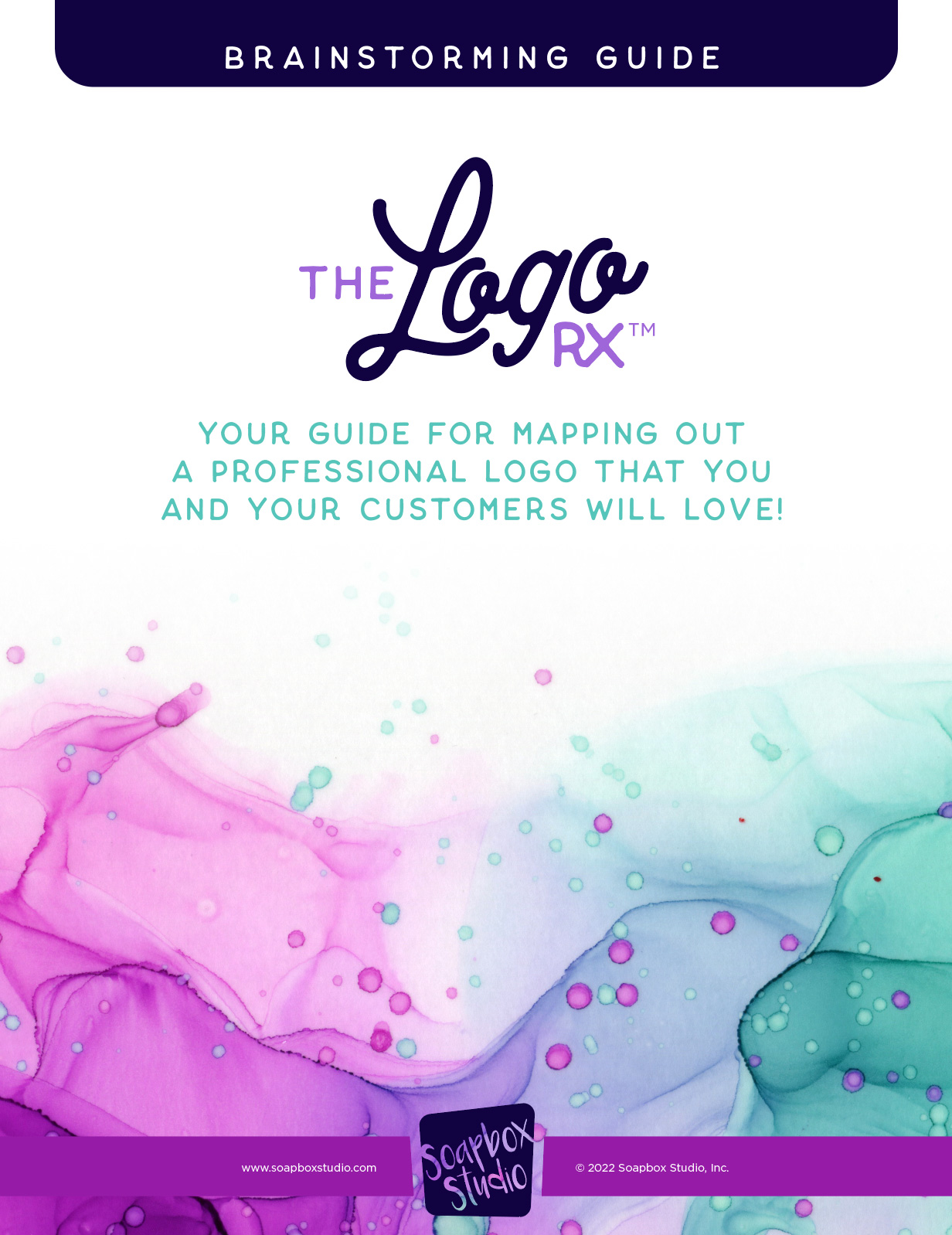7 Tested Graphic Design Tips That Entrepreneurs Need To Know
As an entrepreneur, are you looking for some tested graphic design tips? Since aesthetics mean so much to today’s generation of consumers, even the most low-tech entrepreneur could use a few design tips. We’ve got you covered.
As a graphic design company with over 50 years of combined experience designing websites and graphics for entrepreneurs and business owners, we know what it takes to keep up with today’s trends. These are our top seven tips to keep your graphics looking clean and professional in today’s marketplace.
Brainstorm Your Logo Creation Today!

This guide will walk you through the steps I use as a professional designer, to create beautiful logos for all my clients. I am sharing my steps for FREE, so you can use this secret sauce on your own logos.
Let’s go over these 7 tested graphic design tips:
- Keep it Simple
- Be Consistent with Colors and Fonts
- Don’t Use Too Many Graphics or Icons
- Use Script Fonts Sparingly (and Never in All Caps)
- Have Someone Other Than You Critique Your Work
- Make a Folder of Logos and Brands You Love
- Don’t Feel Obligated To Use a Friend of a Friend
1. Keep It Simple
People often believe that graphic design tips need to be complex to look professional. This simply isn’t true. Keeping your designs minimalistic makes them easier to use in a variety of contexts while maintaining that clean crisp look that draws the eye.
Think about the simple shapes, lines, colors, and fonts that your favorite brands use. How can you replicate that simplicity for your brand identity? Stay away from complicated overlays, photographs, and unreadable text or colors that will distract people from who you are and what you offer.
2. Be Consistent with Colors and Fonts
If you could summarize your brand identity in just a few words, what would you say? Is your brand modern, adventurous, rustic, or colorful? Identifying some key adjectives surrounding your identity will help you stay consistent throughout your web presence and print materials.
If you run an accounting firm, you probably don’t want to use a childlike crayon font. If you own a sporting goods brand, you want to stay away from scrolling cursive fonts. The same holds true for colors.
If you’re marketing to young women, rustic browns probably won’t communicate your identity effectively. Similarly, A baby clothing brand might want to avoid harsh neons. Whatever tone you choose for your branding – be consistent across the board.
3. Don’t Use Too Many Graphics or Icons
Our next graphic design tip is that when it comes to promoting your company, it’s easy to get overly excited. You could fill a vision board with graphics that fit with your company’s vision. But be careful! If you use too many, people get visually overwhelmed and can’t make sense of what they’re looking at. For a logo, just use one image concept.

Don’t try to combine too many or it will no longer make sense. On your website, keep it simple. You can add some images or graphics that help set the tone, but don’t fill every square inch. People need negative space and simplicity so they keep scrolling and want to learn more.
4. Use Script Fonts Sparingly (and never in all caps)
We like to play around with fancy fonts. It’s just fun. But when you’re establishing a brand identity, you need to prioritize readability. If customers can’t read the words you post, it’s going to be pretty hard to connect with them.
A notoriously hard to read font style is script fonts. These are the fonts that look like handwriting or cursive. They are often thin and have a lot of extra curly wisps at the ends of letters and sentences.
One of our most important graphic design tips is that you should use these fonts very sparingly, if at all. This is not the type of font that you want to use for your main website copy or slogan.
And if you use a script font, never use it in all capital letters. These fonts weren’t designed to be in all caps, and it often makes them even harder to read.
If you’re using a script font for a main title or heading, make sure you don’t play too much with the letter spacing or distance. This can make it look awkward and minimize the handwriting effect that you were aiming for to begin with.
If you want to learn more about choosing the best font for your business, read this post: How to Choose the Right Font for Your Brand.
5. Have Someone Other Than You Critique Your Work
Our next graphic design tips is that we are often our own worst critics, but sometimes we’re also our own worst enablers. We know how much work and passion went into a project, so sometimes it is hard for us to see the flaws that exist.

Getting an extra pair of eyes to look at your work and give feedback can help you see your website or brand through a newcomer’s eyes.
Maybe the colors you used don’t fit the vibe. Or maybe it’s harder to read the fonts than you realized. Getting an outside opinion can help you cover all your bases so you don’t run into problems later on.
6. Make a Folder of Logos or Brands You Love
Another graphic design tip is that when you’re just establishing your brand or going through a rebranding process, it’s easy to get lost in the details, so remember to make a folder of you logos you love.
If you find yourself overwhelmed with all the options for colors or fonts to use, take a break. Spend a few minutes collecting the logos, shapes, and colors used by your favorite brands and put them all in one folder.
Then spend some time looking them over together. What common themes do you see? Are there similar color schemes? Do they use a similar font design? Are there specific lines or shapes among the logos?
This exercise will help you cut through the overwhelming amount of options to identify what you like and what elements your eye is drawn to.
7. Don’t Feel Obligated to Use a Friend of a Friend
This next graphic design tip can be a bit controversial. If your friend’s son is going to school for graphic design, you shouldn’t feel automatically obligated to use him. This is your professional brand and the quality matters.
It’s easy to take shortcuts or cut costs, but you usually get what you pay for. You don’t want your brand to lose credibility with your customers because it looks like an amateur did it.
When you’re seeking help to establish your brand identity and get professional assistance designing your logo, do your research. Look at the portfolio of past projects a designer has done and see if they align with your vision.
Find someone who you are confident can deliver the professional results that you want as an established business owner with a reputable brand.
Remember, a graphic designer can help you get started. Instead of spending the next ten months dreaming of what you want, why not hire a designer today and take real achievable steps towards your goals? We’d love to help with any of your graphic design needs, click here to learn more about the design packages we offer.
As graphic design professionals, we’ve seen people fall into the same pitfalls over and over. To help you avoid repeating these same mistakes, we compiled this top seven list to give you the easiest next steps to take. Follow these 7 graphic design tips and your business can be booming with customers who love your eye-catching brand.
Instead of presenting amateur designs and clunky colors that make potential customers doubt your credentials, you can show up every day with graphics that build their trust and increase their confidence.
As you navigate the tricky obstacles of running a business and establishing a reputable online presence, let us keep the graphic design process easy so you can focus on the things that matter most! If you have questions about how to get started with a designer, click here.





